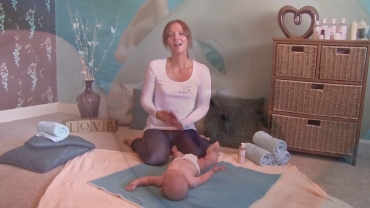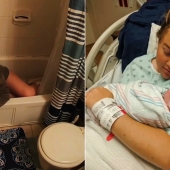Now a troubling trend in women's health. Doctors and nurses have worked hard and successfully to reduce the U.S. infant mortality rate in recent decades. What's less known and less understood is the rise in maternal mortality, mothers dying after pregnancy or from childbirth-related causes.
Renee Montagne of NPR and Nina Martin of ProPublica have teamed up for a series of reports on the subject. Their latest installments came out today. Judy Woodruff recently spoke with them both.
JUDY WOODRUFF: Renee Montagne, Nina Martin, thank you very much for talking with us. So, Americans think we have the best health care, medical care in the world. How could it be, Renee Montagne, that we have this problem?
RENEE MONTAGNE, NPR: Well, there are a lot of reasons. And there are some underlying reasons that most people would recognize. And that is -- that is people, low-income women, women of color, women in rural settings have less access to the best possible medical care. But what we're finding and what the numbers are showing is that there are -- this could actually happen to just about anyone. I mean, we're finding women who had -- who had what would have thought to have been the best of care.
NINA MARTIN, ProPublica: Right. And that's part of the problem is that a lot of doctors, a lot of nurses, a lot of hospitals think that maternal mortality is something that happens in other countries; it's a thing of the past in the U.S. And so, basically, there are two issues that have arisen. One is that there's just a lack of recognition, a lack of awareness about what life-threatening complications look like.
JUDY WOODRUFF: And on the part of doctors, hospitals?
NINA MARTIN: All. All of the above, nurses as well, and patients a lot of times, because patients are not necessarily educated. We don't want to worry the patients. And so, when an emergency does happen, the next thing that sort of kicks in is that hospitals and doctors and nurses often are not prepared for the emergency, so there's sort of a denial and then a delay.
JUDY WOODRUFF: There has been a lot of focus on making sure babies are born healthy.
RENEE MONTAGNE: Exactly. One of the things that we came across in our different -- in recent conversations, Bill Callaghan of the CDC, who has spent his life studying this, he had an article from 1950 that declared victory over maternal mortality. Women didn't die in childbirth in great numbers anymore, they said. And, basically, that was -- you know, that sophisticated journal was the beginning of an emphasis on saving babies. And, of course, babies do die in much greater numbers. They are more vulnerable. But, basically, everybody turned their sights to the wonderful ways you could save babies, new technology and focusing -- neonatal units in the next 20 or so years became part of a good hospital, a good birthing center.
JUDY WOODRUFF: You both have done so much reporting on this. The series, of course, is running over many months. We have a clip right now of the husband of a woman. She was a neonatal nurse, so she worked in health care. But she ended up with either a lack of diagnosis, the wrong diagnosis. And this is a clip as I guess she's going into surgery, but where her condition has severely deteriorated. Let's listen.
DR. LARRY BLOOMSTEIN, Widower: So, they took her to the operating room, and the neurosurgeon operated for, I think, about four hours, and when he came out, he said that she's still alive. She's basically on life support, but she's brain-dead. So, at that point, we decided to withdraw.
JUDY WOODRUFF: So this was Lauren Bloomstein, Nina, who -- as we said, a nurse in New Jersey. They thought everything was fine. She delivered the baby, and then things went terribly wrong.
NINA MARTIN: Right. So, Lauren Bloomstein is an example of the kind of person that everyone assumes doesn't die in childbirth or pregnancy-related causes in the U.S. She had great health care. She was a nurse herself. Her husband, Larry, who we just heard, was a doctor. He was with her in the delivery room. He basically never left her side, except to take the baby up to the nursery. She came in with a condition called preeclampsia, that is, pregnancy-induced hypertension. She had not had it. And she came in and her symptoms were not recognized from the moment she came to the hospital.
JUDY WOODRUFF: Are there lessons being learned, Renee, by hospitals, by medical care providers around the country as a result of situations like this?
RENEE MONTAGNE: There is something of a movement, in fact, among concerned medical professionals to actually address these problems. But the lessons in the individual situation often come from the mother dying. And then that hospital may rethink what it's doing. The doctors may learn a lesson.
JUDY WOODRUFF: So, it's a lack of training?
NINA MARTIN: It's a lack of training, and a lack of education and a lack of recognition in some cases, but it's also a lack of having a set of protocols and standards in place for where the rare emergency happens, so, a hemorrhage, for example, or, in Lauren's case, preeclampsia. There's a very specific set of things that doctors and hospitals and nurses should be -- start to do immediately as soon as they recognize the symptoms. But, often, those standards aren't even in place in very good hospitals, until it's too late and until the next time.
JUDY WOODRUFF: But, again, it just seems stunning. Again, we think of the United States, Renee, being -- having the most advanced medical care in the world. How could it be that the medical team who are working with women giving birth don't -- aren't prepared to deal with all these circumstances?
RENEE MONTAGNE: Well, when you see these stories, when you hear these stories, you actually ask that question every time. They're almost unbelievable. But the reality is, hospitals have protocols, but they're not necessarily well-practiced. They're not consistent. There are not lists for people to follow, when you see one thing, that means the other. You don't think about it. It's a very -- I think it's kind of deeply embedded in the American medical system among obstetricians and even obstetrical nurses.
NINA MARTIN: And smaller and rural hospitals are less likely to have these protocols in place, because they're smaller. They have had fewer less deliveries. And so they are less likely to encounter a life-threatening complication, so that's another problem.
JUDY WOODRUFF: We started out, I think, also talking about whether there were other factors, socioeconomic status, whether women of -- whether this was a planned pregnancy or not, whether the mom took care of herself during the pregnancy. Renee, are those -- even the race, age of the mother, are those not factors that you found?
RENEE MONTAGNE: To hear what people say -- that researchers will say is, those are all factors, and they are all there, and, to some extent, they're recognized in women who have high-risk pregnancies, and that's recognized. If you have -- if you're obese or if you have hypertensive -- some kind of hypertensive disease to begin with, those things are watched if you're in a good hospital. And, of course, the American medical system is such that there are enough people not in good hospitals. So, yes, these are factors, but they're -- as researchers will say, they're not the reason women die. Women die from these conditions, these complications. And there is a CDC Foundation analysis that has it that 60 percent of all these deaths could be prevented.
NINA MARTIN: The underlying conditions that women die from are not age. They're not -- it's not being obese or being African-American, although African-American women do die at two to three times the rate of white women. It's heart disease, some sort of heart-related condition, or a hemorrhage, or preeclampsia, or an infection that is not diagnosed.
- 346 views













